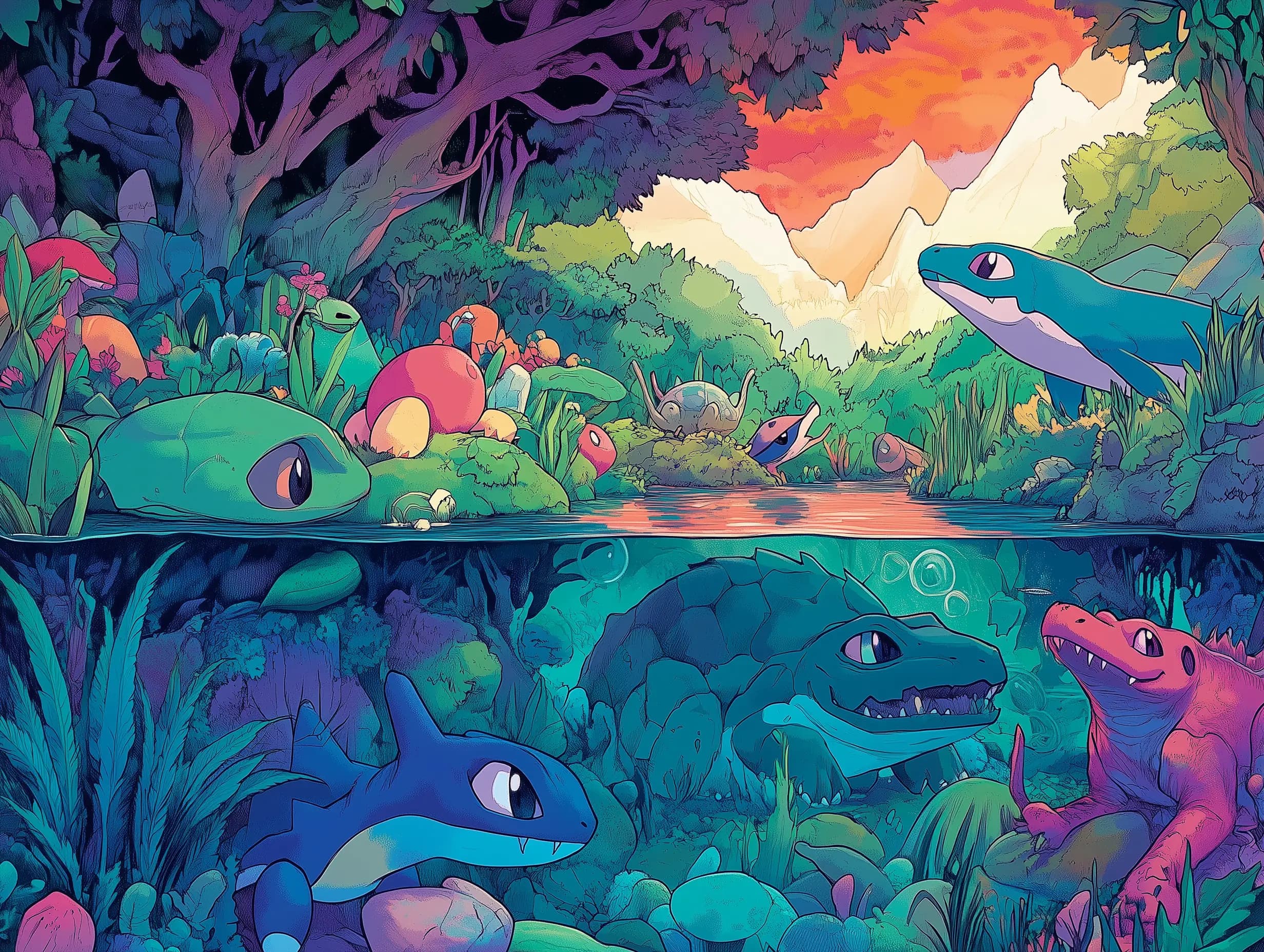Pokémon, Ambassadors of Biodiversity and Modern Science

For some scientists and enthusiasts, Pokémon is also a fertile ground for discovering biology from a playful angle. Many Pokémon are directly inspired by creatures and concepts from the real world, providing a bridge between the fantastic and science. Let's explore how the creators of Pokémon draw from animal and plant biology, and even technological advances, to bring their creations to life.
Animal Inspiration: Pokémon Taking Root in Biology
Pokémon Based on Real Animal Species
From Pikachu, which may well be inspired by a small rodent like the pika or squirrel, to Wooper which adopts the traits of an axolotl, some Pokémon seem to come straight out of a zoology manual. These hybrid creatures, half-real, half-fantastic, captivate young minds while bringing them closer to nature. A nod to the mammals, birds, and reptiles of the real world that inhabit our planet, often ignored but, thanks to Pokémon, sparking new curiosity.
Marine Creatures in the Spotlight
How can we not think of the majesty of the oceans with Pokémon like Gyarados or Totodile, resembling sea dragons (phycodurus eques) and crocodiles respectively. Waters and rivers also have their stars in the series, drawing inspirations from the depths to create creatures like Krabby or Starmie.
Seeds of Genius! 🌱
Plant Pokémon and Their Botanical Roots
One might say some Grass-type Pokémon have a green thumb! From Oddish to Venusaur, each creature seems to draw its inspiration from a real plant. Venusaur, for example, might be a mix between a Rafflesia flower and a dinosaur, showing how flora can be combined inventively. Through these characters, the game invites us to reflect on the plant diversity of our planet.
Mushrooms and Haunted Folkloric Trees
With Pokémon like Foongus and Breloom, the franchise doesn't just stick to flowering plants. It also encourages interest in mushrooms, vital in nature for recycling organic matter. A beautiful way to raise awareness of the importance of biodiversity, even that found underfoot! Another fascinating example is Phantump, inspired by a haunted tree trunk, blending both the biological reality of ancient forests and mythological legends. By drawing inspiration from dead trees and forest spirits, this Pokémon reminds us of the fundamental role of trees in preserving biodiversity and bridges with the tradition of folklore tales. Perfect for raising awareness about forest conservation and the importance of natural cycles!
Storm of Battle! ⚡
When Electric Pokémon Meet Electromagnetism
The link between the science of electricity and Pokémon is undeniable. Take, for example, Magneton and Voltorb, embodying real electromagnetic concepts. These creatures play with modern science principles and, in a way, teach the young basics of electricity while offering them electrifying battles.
Pikachu and Renewable Energy?
Though Pikachu is an iconic Pokémon, he is also an interesting metaphor for discussing renewable energy. Imagine power sources as cute as him, using static electricity or natural lightning to illuminate our daily lives. Who'd have thought energy science could be so adorable?
Metamorphosis, On Your Wings!
From Caterpie to Butterfree, Biology at Work
Bug-type Pokémon are often living symbols of the incredible process of metamorphosis observed in many insects in nature. Caterpie, for example, is a direct reference to caterpillars that transform into butterflies after passing through a chrysalis stage. In the world of Pokémon, this progresses to Metapod then Butterfree. Additionally, consider Weedle, which goes through an intermediate stage as Kakuna before becoming Beedrill, its final evolution. These transformations adhere to the same pattern as in nature: from larva, the insect passes through a chrysalis (or cocoon) before emerging in its adult form. This evolution beautifully illustrates the insect life cycle, a fascinating process enabling children (and adults) to better understand how creatures like butterflies and ladybugs grow and develop.
Darwin with a Poké Twist
Pokémon evolutions are reminiscent of another major biological concept: natural selection. Eevee is a perfect example of this principle, with its multiple evolutions depending on its environment (Water, Fire, Thunder, Plant, etc.). This echoes how, in nature, some species adapt their physical and behavioral traits according to their habitat and survival needs. A true nod to Darwin's theory of evolution!
Keeping an Eye on the Sky and the Seasons
Certain Pokémon, like Castform, change form based on weather conditions. Castform adapts its appearance to rain, sun, or even sandstorms, perfectly embodying the adaptation of creatures to their environment. This concept mirrors how some species in nature modify their behaviors or physiology in response to climate. Other Pokémon, such as Lunatone and Solrock, are directly associated with celestial phenomena, like the sun and moon, emphasizing the importance of natural cycles and celestial bodies in biodiversity. Similarly, Scorbunny, whose evolution is influenced by the climate of the Galar region, nods to how fauna adapts to different climatic conditions.
Back to the Past!
Pokémon like Kabuto or Aerodactyl, revived from fossils, provide a glimpse into the evolution of extinct species. This process echoes paleontology, a science that studies the remnants of the past to better understand the evolution of life on Earth.
Save the Corsola! 🪸
Pokémon and Environmental Protection
Some Pokémon, like Corsola, are true spokespeople for threatened biodiversity. With the degradation of coral reefs worldwide, Corsola's presence reminds us how necessary it is to protect these fragile ecosystems. And it's not the only example: Wailord, the immense Whale Pokémon, is also a major symbol of protecting the sea giants.
Ecosystems to Protect
Pokémon do not live in isolation. They evolve in rich and varied habitats, much like real-world animals. Whether it's the lush forests of Venusaur or the icy mountains of Mamoswine, these environments are allegories of real ecosystems that also need our attention to survive.
Behind the apparent simplicity of each Pokémon often lie references to nature and science. By drawing inspiration from fauna, flora, and physical concepts, the franchise has awakened curiosity for biology and the sciences. With a close look at these fictional creatures, one realizes that the line between science and fiction is thinner than one might think!
